Mastering Homemade Peshwari Naan: Your Guide to Sweet, Fluffy Perfection
Embark on a culinary journey to Pakistan with our exceptional Peshwari Naan recipe. This isn’t just bread; it’s a luxurious, flavour-packed flatbread experience that promises to elevate your home cooking to restaurant quality. Imagine a warm, fluffy naan, subtly sweet and rich with a fragrant filling, baked to golden perfection. That’s the magic of homemade Peshwari Naan, and it’s surprisingly simple to achieve.
Peshwari Naan stands out from its traditional counterparts. Originating from the vibrant city of Peshawar in Pakistan, this delightful flatbread is a beloved staple enjoyed across South Asia and a firm favourite in British Indian cuisine. What makes it so special? It’s generously stuffed with a unique, sweet filling crafted from a harmonious blend of sultanas, almonds, desiccated coconut, various nuts, aromatic spices, and a touch of honey. Each bite offers a delightful contrast: a slightly crispy exterior yielding to a soft, fluffy interior brimming with sweet, nutty goodness.
Whether served as an impressive standalone appetizer or as the perfect accompaniment to your favourite curry, this naan is a showstopper. Get ready to transform your kitchen into an authentic South Asian bakery and impress your family and friends with this irresistible sweet bread.
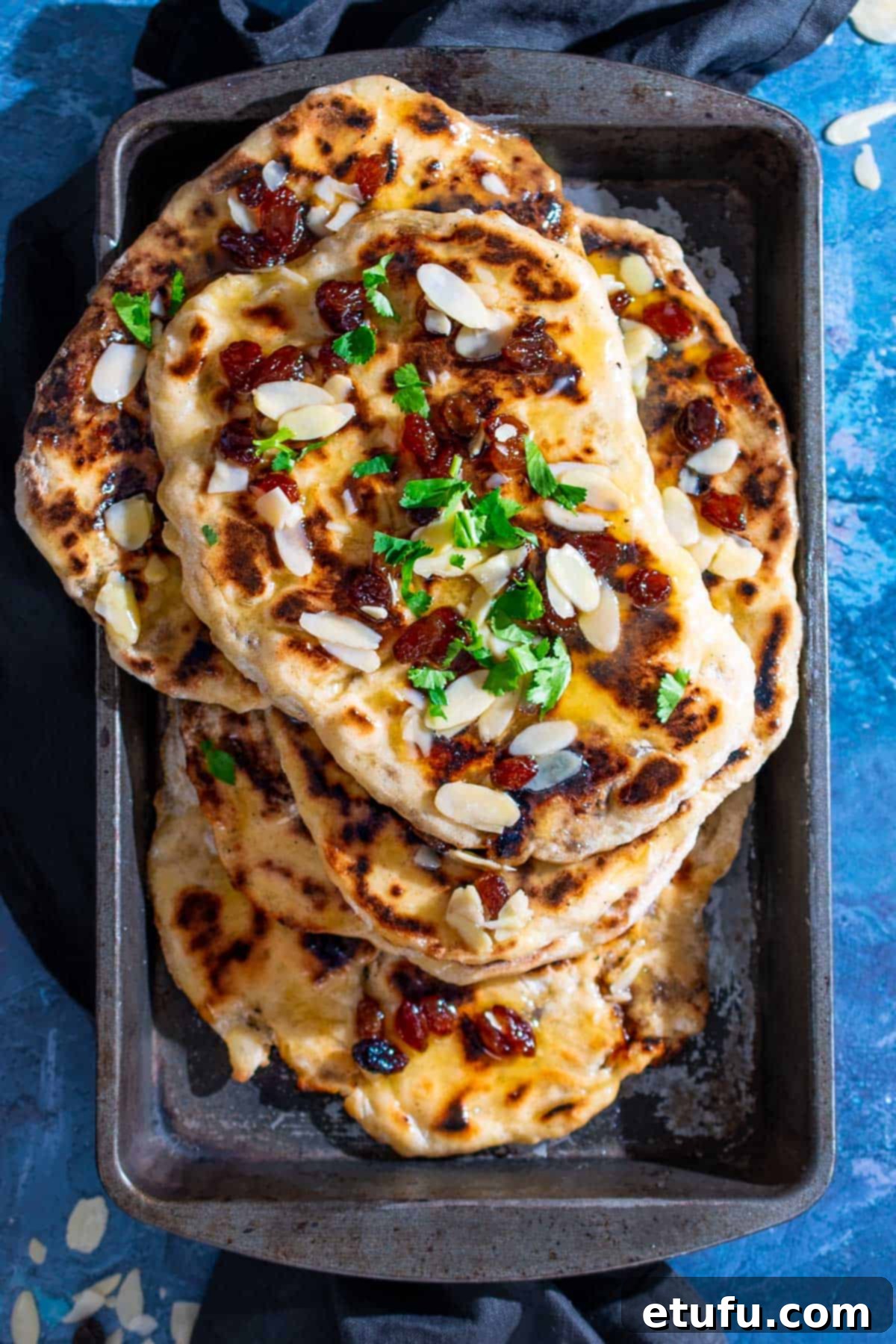
Looking for the perfect curry pairings for your freshly baked Peshwari Naan? Explore our quick Chicken Karahi, a spicy and tangy classic, or delve into the rich and comforting flavours of this Aromatic Beef Curry with Coconut Milk and Butter Rice. And to balance the heat and richness, why not try a refreshing Strawberry Lassi?
Why You’ll Adore This Homemade Peshwari Naan Recipe
Creating Peshwari Naan at home might seem daunting, but this recipe makes it effortless, delivering truly exceptional results. Here’s why this recipe will become a cherished favourite in your culinary repertoire:
- Authentic Restaurant-Style Naan, Made at Home: Say goodbye to takeout and hello to the incredible satisfaction of freshly baked naan. This recipe replicates the soft texture and irresistible flavour found in the best Indian and Pakistani restaurants, bringing that authentic experience right to your dining table. The aroma alone is enough to transport you!
- A Symphony of Flavours with a Hint of Sweetness: Unlike plain naan, Peshwari naan is a feast for the senses. Its sweet, nutty filling is a delicious surprise, perfectly balancing the richness of curries. The combination of sultanas, almonds, coconut, honey, and subtle spices creates a complex yet comforting taste profile that is truly unique.
- Convenient & Freezer-Friendly: Life gets busy, but delicious food shouldn’t be a chore. Both the dough and the cooked naans from this recipe freeze beautifully. This means you can prepare components in advance, making meal prep a breeze, or simply have a stash of homemade naan ready for any spontaneous curry craving.
- Impressive Yet Easy: While its exotic name and rich flavour might suggest complexity, this recipe is designed for home cooks of all skill levels. With clear, step-by-step instructions, you’ll be creating stunning Peshwari naans with confidence and ease.
Pakistan: A Culinary and Cultural Snapshot
Peshwari Naan owes its origins to Pakistan, a country rich in history, diverse cultures, and vibrant culinary traditions. Understanding a little about its homeland adds another layer of appreciation to this delightful flatbread.

| Location | Nestled in South Asia, Pakistan shares borders with India to the east, Afghanistan and Iran to the west, China to the north, and boasts a southern coastline along the Arabian Sea. Its diverse geography ranges from towering mountains to vast deserts and fertile plains. |
| Language | While Urdu serves as the official language and a symbol of national identity, Pakistan is a mosaic of linguistic diversity. Numerous regional languages thrive across the country, including Punjabi, Sindhi, Pashto (prominently spoken in the Peshawar region), Balochi, and many others, each contributing to the nation’s rich cultural tapestry. |
| Population | With a population of approximately 225 million people, Pakistan is one of the most populous countries in the world, renowned for its youthful demographic and bustling urban centers. |
| Trivia | Cricket is more than just a sport in Pakistan; it’s a national obsession and a unifying force. The passion for cricket runs incredibly deep, and it’s a common sight to witness impromptu matches played with immense enthusiasm on streets, in parks, and any available open space across the country. This shared love for cricket brings people of all ages and backgrounds together, creating a lively and infectious atmosphere wherever the game is played. |
Peshawar, the city that lends its name to this naan, is one of the oldest living cities in South Asia, renowned for its rich history, ancient bazaars, and as a gateway to Central Asia. Its culinary heritage is equally profound, influencing dishes far beyond its borders.
Essential Ingredients: Notes & Expert Tips
Understanding the role of each ingredient can make a significant difference in the outcome of your Peshwari Naan. Here’s a breakdown of the key components and helpful tips for best results and substitutions.
**For the complete list of ingredients with precise measurements, please refer to the detailed recipe card at the bottom of this page.
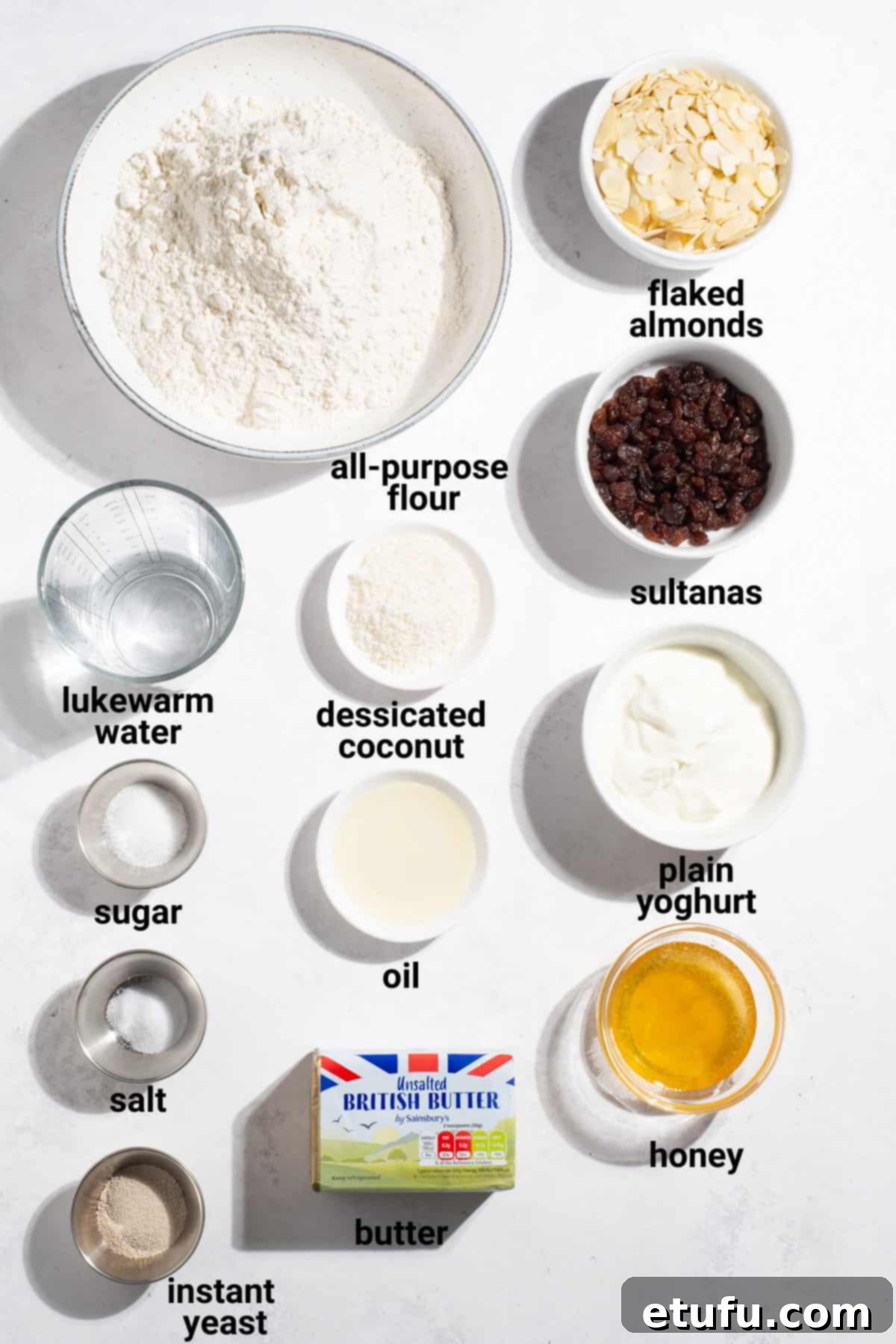
Lukewarm Water
This is crucial for activating your yeast. The temperature needs to be just right: too hot, and it will kill the yeast, preventing your dough from rising; too cold, and the yeast won’t activate effectively, leading to dense naan. Aim for water that feels neither hot nor cold to your touch, ideally between 36°C and 40°C (97°F and 104°F). A simple trick for achieving this is to mix one part boiling water with two parts cold tap water. Always test it with a clean fingertip or a thermometer before adding yeast.
Instant Yeast
Always ensure your instant yeast is fresh and within its expiration date. Old or inactive yeast will result in a flat, heavy naan. While instant yeast generally doesn’t require activation in warm water (it can be mixed directly with dry ingredients), blooming it in warm, sugary water first, as this recipe suggests, helps to verify its activity and can speed up the rising process, giving you a head start on a fluffy dough. If you only have active dry yeast, you can substitute it in equal amounts, but it’s even more important to activate it in warm water with sugar until foamy before adding to other ingredients.
Sugar
Beyond adding a touch of sweetness to the dough itself, sugar plays a vital role in the yeast activation process. It acts as “food” for the yeast, providing the necessary energy for it to ferment and produce carbon dioxide gas. This gas is what creates the airy pockets in the dough, causing it to rise and become light and fluffy. Do not omit the sugar from the dough mixture, even if you prefer a less sweet naan overall, as it’s essential for the yeast’s function.
Plain Yoghurt
The addition of plain yoghurt contributes significantly to the softness and tenderness of the naan dough. Its acidity helps tenderize the gluten, resulting in a more pliable and softer texture. Opt for plain yoghurt over thicker varieties like Greek yoghurt. Greek yoghurt can be heavier and might make the naan dense, while plain yoghurt contributes to a lighter, more ethereal naan.
Sultanas
These sweet, golden raisins are a cornerstone of the Peshwari naan filling, contributing natural sweetness and a lovely chewy texture. Sultanas are typically softer and plumper than regular raisins, which makes them ideal for the filling’s texture. If sultanas are unavailable, regular raisins can be used as a perfect replacement, though you might consider soaking them briefly in warm water to soften them if they seem particularly dry.
Flaked Almonds
Flaked almonds are a key ingredient, offering a delicate nutty flavour and a pleasant crunch. You’ll be using them in two places: as part of the rich, sweet filling and as a garnish in the delightful glaze, adding both texture and visual appeal to the finished naan.
Desiccated Coconut
This refers to finely shredded and dried coconut flesh, which is a common baking ingredient and usually found in the baking aisle of most supermarkets. It’s important not to confuse it with larger coconut flakes or shredded coconut, as the finer texture of desiccated coconut integrates better into the smooth, pliable filling.
Honey
Honey not only enhances the sweet profile of the filling and glaze but also adds a unique depth of flavour and helps with the desirable golden-brown colour of the naan. If you don’t have honey on hand, golden syrup makes an excellent substitute, offering a similar sweetness and consistency.
Essential Tips for Perfect Peshwari Naan
Before you dive into the step-by-step instructions, familiarize yourself with these crucial tips to ensure a smooth cooking process and the best possible results for your homemade Peshwari Naan.
Kneading the Dough for Optimal Texture
The dough for Peshwari Naan is intentionally soft and a bit sticky, which is key to its light and fluffy texture once cooked. For ease and efficiency, we highly recommend using a stand mixer equipped with a dough hook attachment. This will save you time and effort, ensuring the dough is thoroughly kneaded to develop its gluten without sticking excessively to your hands. If you prefer to knead by hand, keep a small bowl of extra flour nearby. Dust your hands and your work surface frequently to prevent the dough from sticking, adding just enough to manage the stickiness without making the dough stiff.
Achieving the Right Portion Sizes
This recipe is designed to yield four substantial naans, akin to the generous sizes typically served in British Indian restaurants. To cook these large naans effectively, you’ll need a frying pan with a diameter of at least 28cm (11 inches). If you prefer smaller, more manageable naans or wish to serve more individual portions, simply divide the dough into smaller pieces (e.g., 6 or 8 instead of 4). Remember to adjust the amount of filling and glaze accordingly for each smaller naan to maintain the perfect balance of flavours.
Customizing the Level of Sweetness
Peshwari Naan is inherently on the sweeter side, with both its luscious filling and the delectable glaze contributing to its characteristic flavour. This sweetness is part of its charm and what makes it such a delightful contrast to savoury curries. However, if you prefer a less sweet profile, you have an easy customization option: simply omit the final glaze. Instead, once your naans are cooked, brush them generously with plain melted butter. This will still add richness and shine without the extra sugar, allowing the nutty flavours of the filling to shine through more prominently.
Easy Step-by-Step Guide to Homemade Peshwari Naan
Follow these detailed instructions to create perfect, flavourful Peshwari Naans from scratch.
Part 1: Preparing the Dough

- In a small mixing bowl, combine the lukewarm water, sugar, and instant yeast. Give it a gentle stir to mix.
Note: Yeast requires a specific temperature to activate properly. The water should be comfortably warm, roughly between 36°C (97°F) and 40°C (104°F). If the water is too hot, it will destroy the yeast, preventing your dough from rising. If it’s too cold, the yeast will not activate effectively, leading to a dense naan.

- Let the yeast mixture sit undisturbed for 10 to 15 minutes. During this time, you should observe a frothy layer forming on the surface, indicating that the yeast is active and alive. If no froth appears, your yeast may be old or the water temperature was incorrect, and you should start again with new yeast.
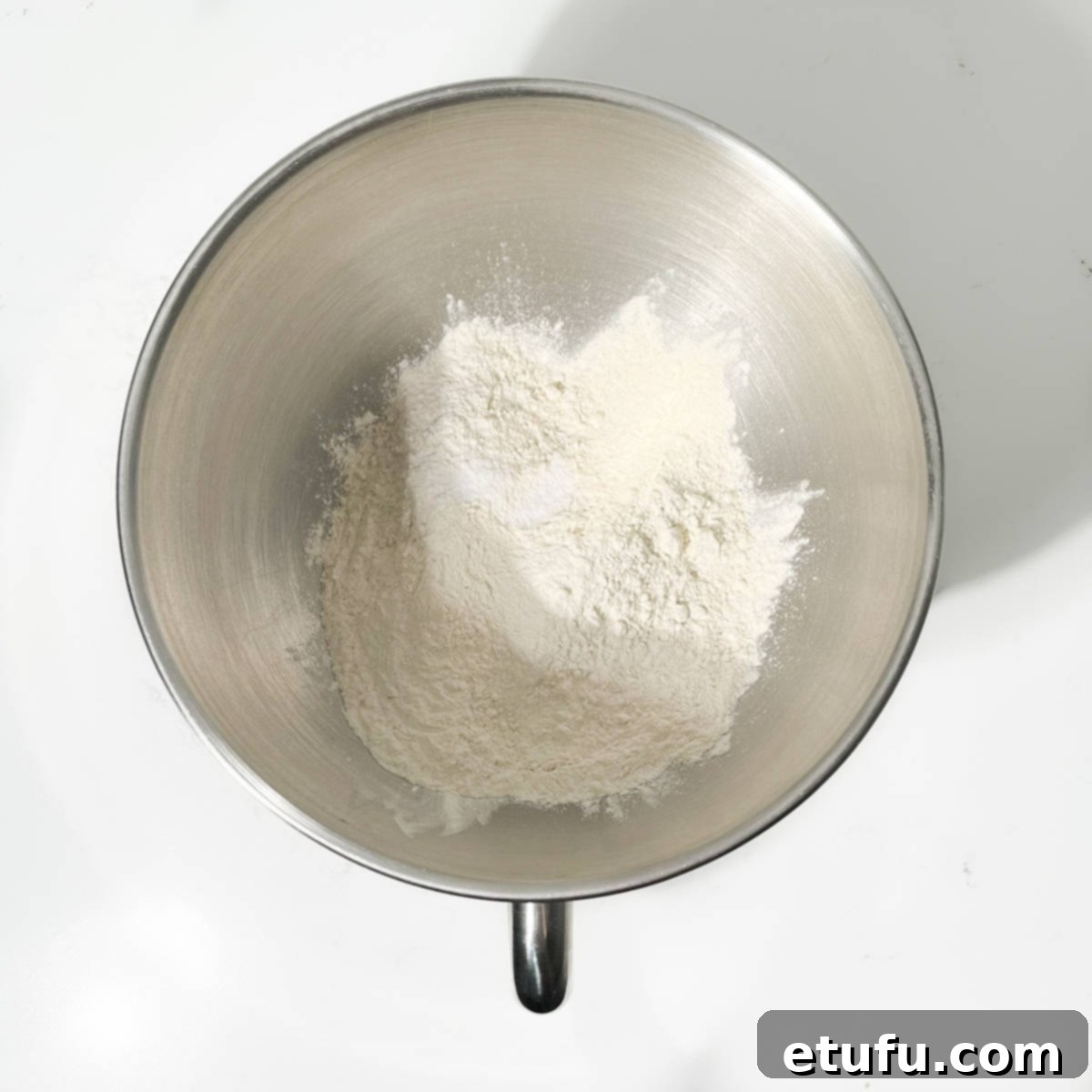
- Into the bowl of a stand mixer, add the all-purpose flour and salt. Stir these dry ingredients briefly to ensure they are well combined.

- Pour the oil, plain yoghurt, and the activated yeast mixture into the bowl with the dry ingredients. Use a spoon or spatula to give it a preliminary stir, just enough to lightly combine the wet and dry ingredients. The mixture will look shaggy.
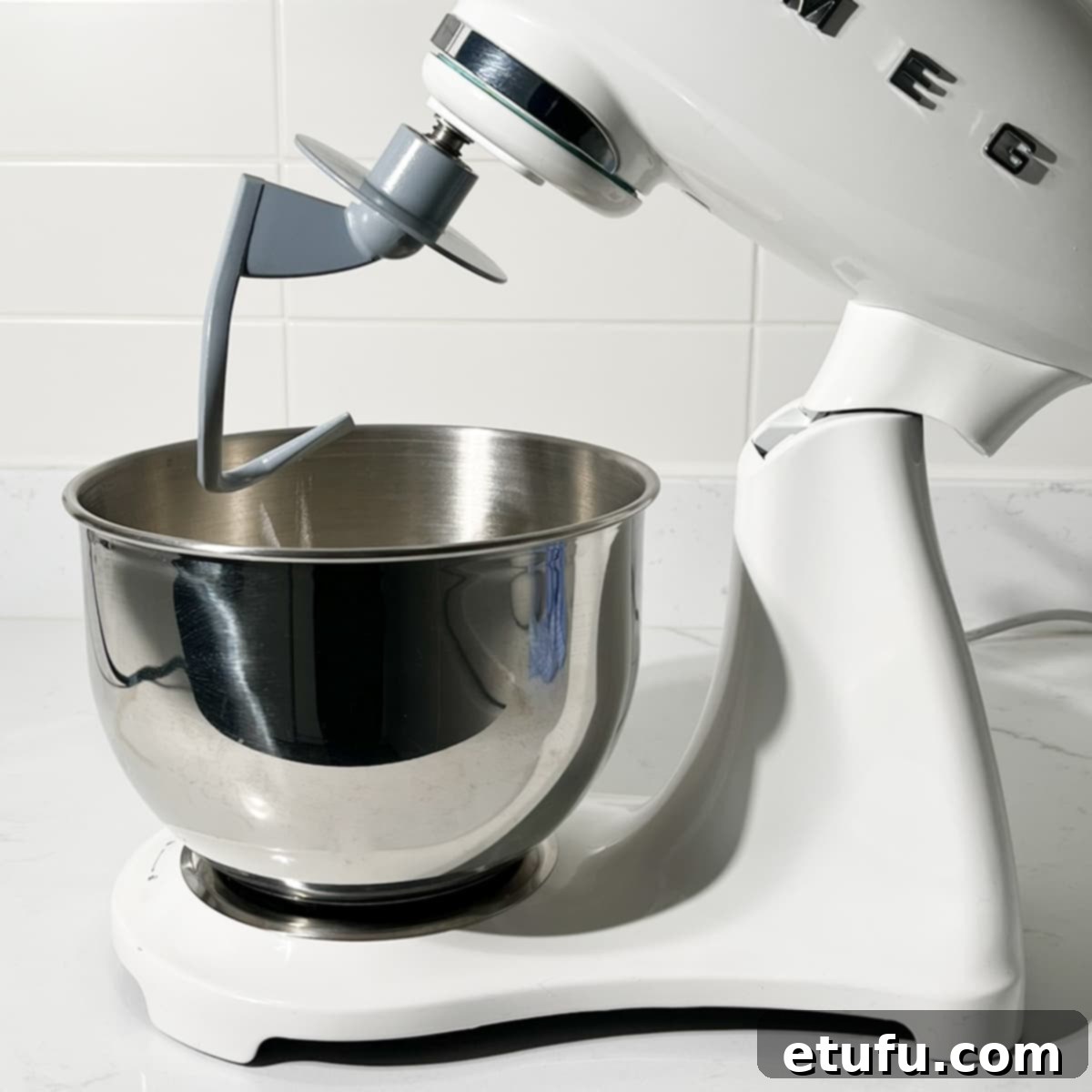
- Attach the dough hook to your stand mixer.

- Switch the mixer to a low speed and knead the dough for approximately 10 to 12 minutes. You’re looking for a transformation: the dough should become soft, elastic, smooth, and much less sticky, easily pulling away from the sides of the bowl. Proper kneading is essential for developing the gluten, which gives naan its characteristic chewiness.
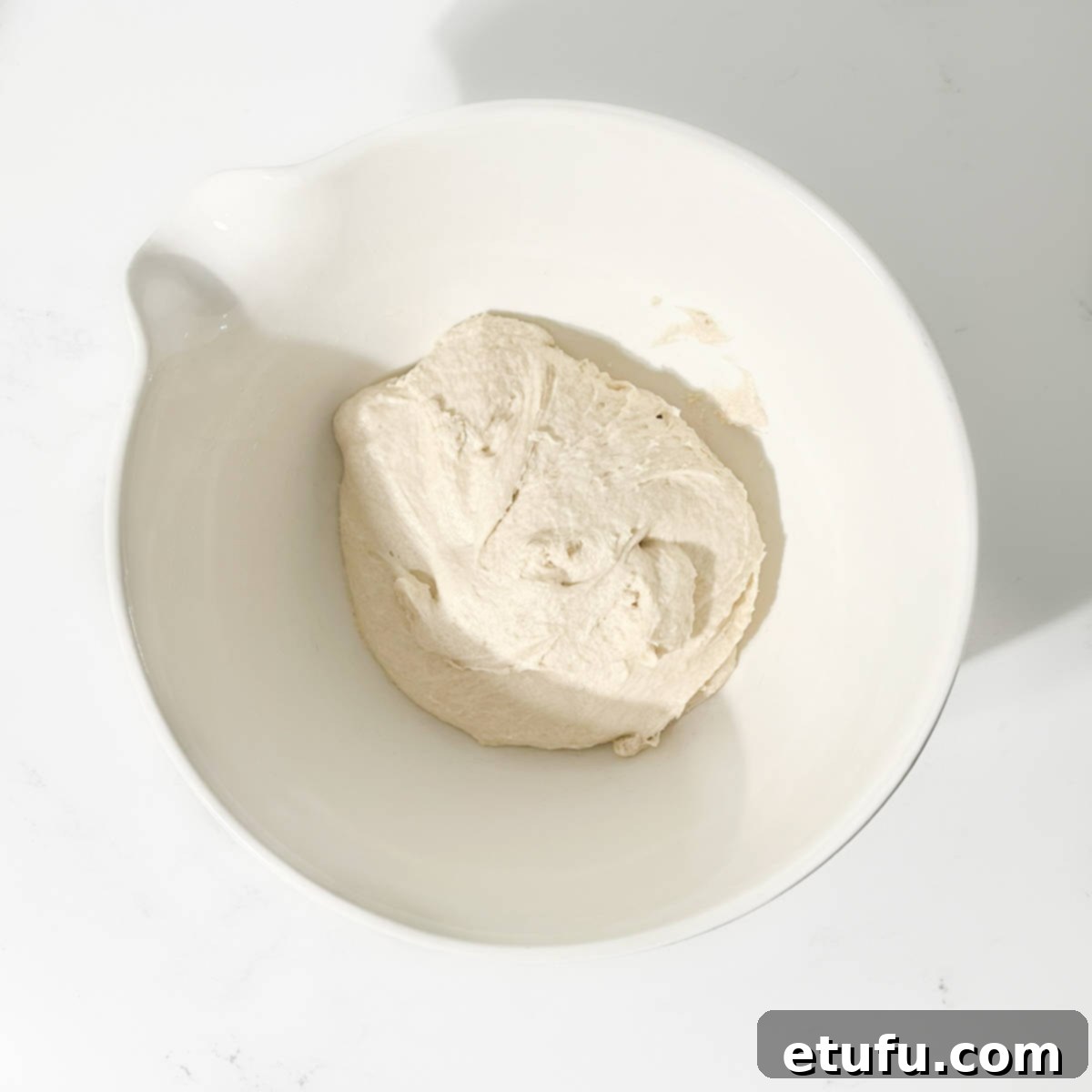
- Lightly oil a clean bowl. Transfer the kneaded dough into this bowl, turning it once to coat all sides with a thin layer of oil. Cover the bowl tightly with plastic wrap or a clean damp tea towel. Place it in a warm, draft-free area to rise for approximately one hour.
Tip: If your kitchen is cool, you can create a warm environment for rising. Briefly preheat your oven to its lowest setting for just a couple of minutes, then turn it off completely. Place the covered dough bowl inside the warm (not hot!) oven. This consistent, gentle warmth will encourage the yeast to work its magic.
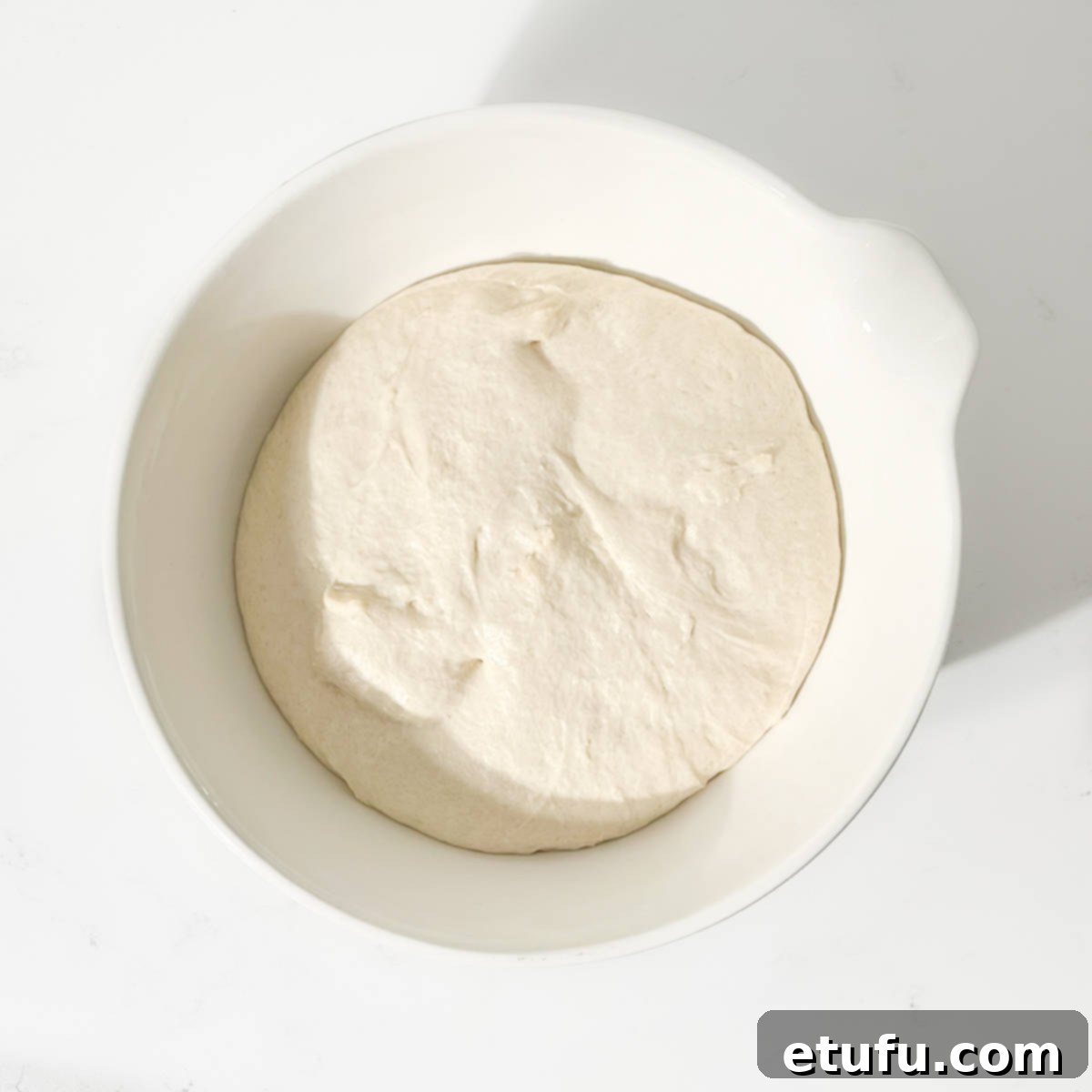
- After approximately one hour, the dough should have impressively risen, roughly doubling in its original size. This indicates a successful proofing.

- Gently tip the risen dough out onto a surface that has been generously dusted with flour. Due to its soft and slightly sticky nature, this dough requires a good amount of flour to prevent it from adhering to your hands and the work surface during the next steps. Divide the dough into four equal portions.

- Lightly sprinkle each piece of dough with a bit more flour. Gently shape each portion into a smooth ball. Then, with the palm of your hand, press each dough ball down to form a flat, circular disc. Turn them over occasionally to ensure they are not sticking to your floured surface. Let these discs rest while you prepare the fragrant Peshwari filling.
Part 2: Crafting the Sweet & Nutty Peshwari Filling

- Add all the ingredients designated for the Peshwari filling into the bowl of a food processor. This includes your sultanas, flaked almonds, desiccated coconut, honey, plain yoghurt, and melted butter.

- Pulse and blend the mixture until it forms a coarse, yet pliable paste. You want a texture that holds together easily when pressed, but still has some visible flecks of nuts and sultanas for texture. Avoid over-processing it into a completely smooth paste.
Part 3: Assembling Your Peshwari Naans
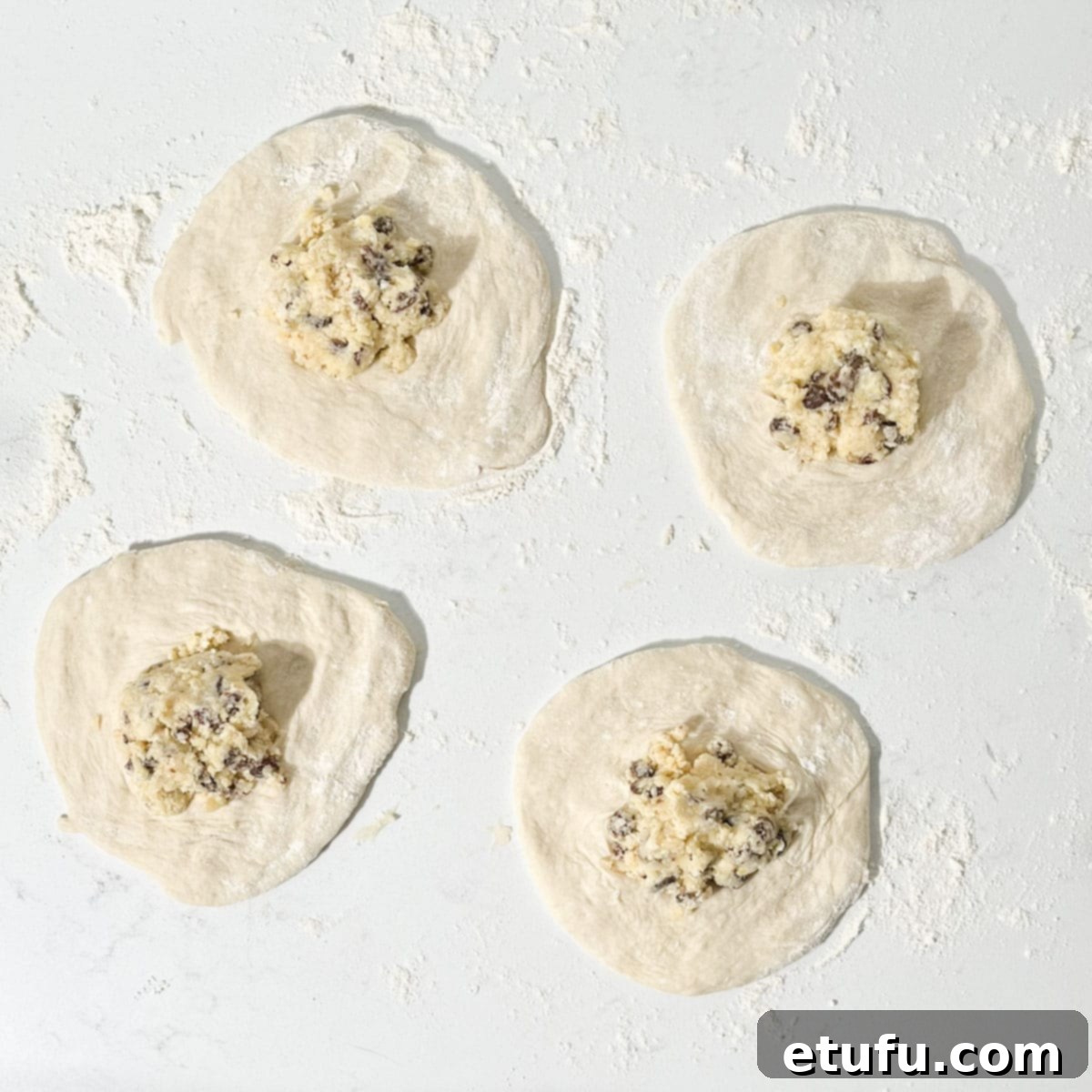
- Divide the prepared Peshwari filling into four equal portions. Take one portion of the filling and shape it into a small ball. Place this ball of filling precisely in the center of one of the flattened dough rounds.
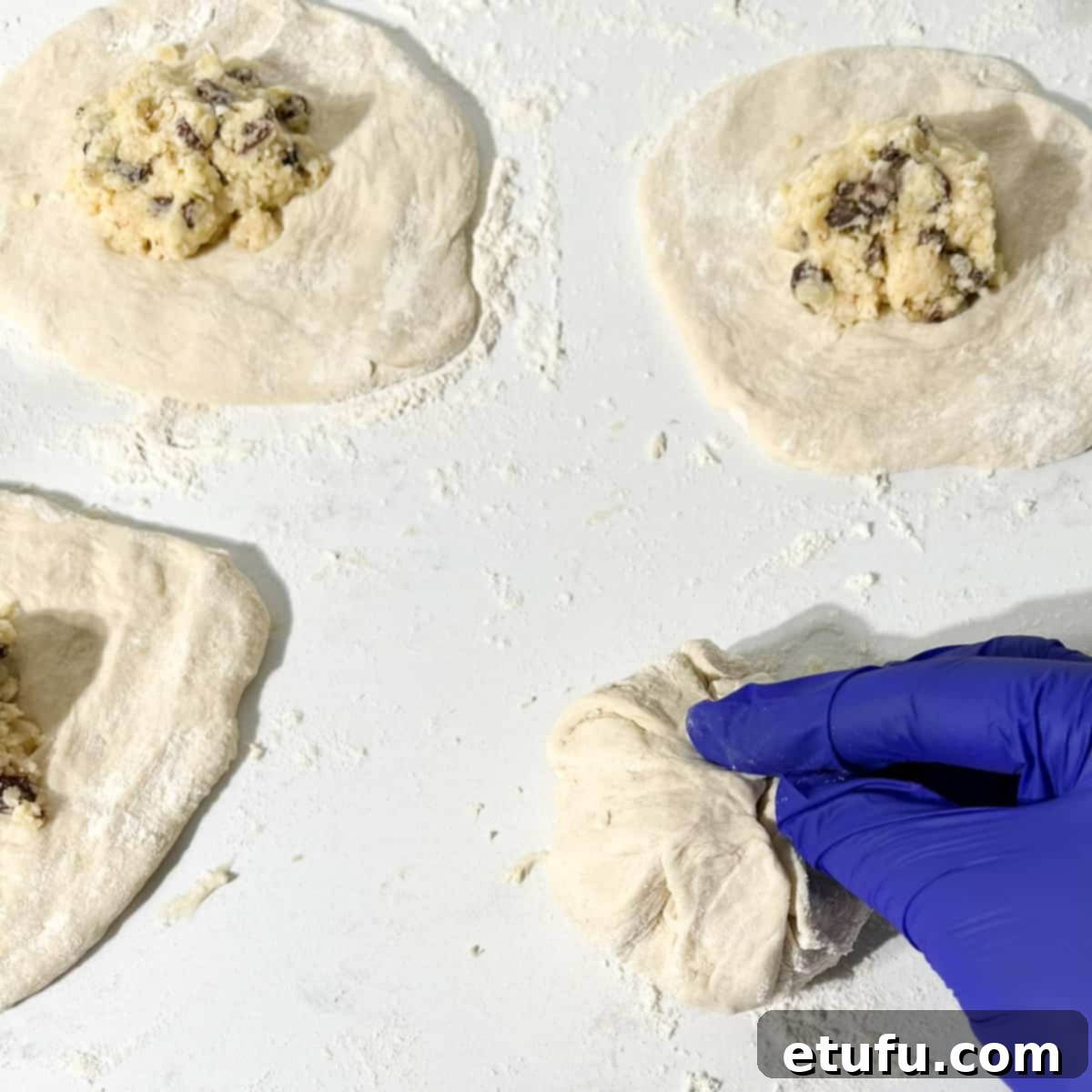
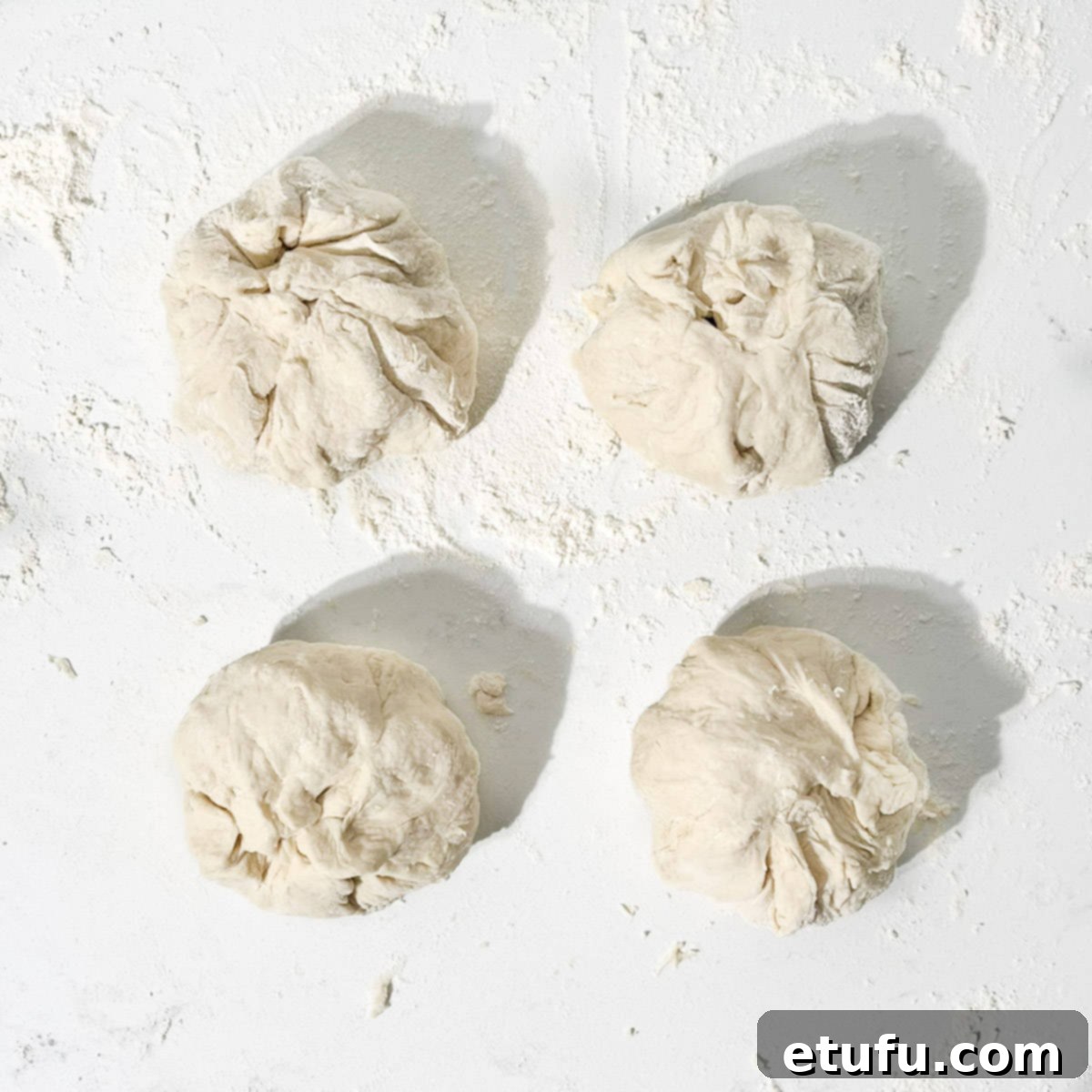
- Carefully bring the edges of the dough circle up and around the filling, much like you would wrap a small parcel. Gather all the edges neatly at the very top and firmly pinch them together to create a secure seal. This ensures the precious filling remains encapsulated within the dough as it cooks.

- Once sealed, gently turn each dough ball upside down so that the pinched, sealed end is now resting on the bottom against your floured surface. This helps maintain a smooth top surface for rolling.

- Using a rolling pin, carefully roll out each filled dough ball into a rough teardrop or oval shape. Aim for a consistent thickness of about 5mm (⅕ inch). Be gentle to avoid tearing the dough and exposing the filling. As you roll, turn the naan over halfway through the process to ensure both sides remain lightly floured and do not stick to your work surface. Repeat this filling and rolling process for each of the remaining dough balls.
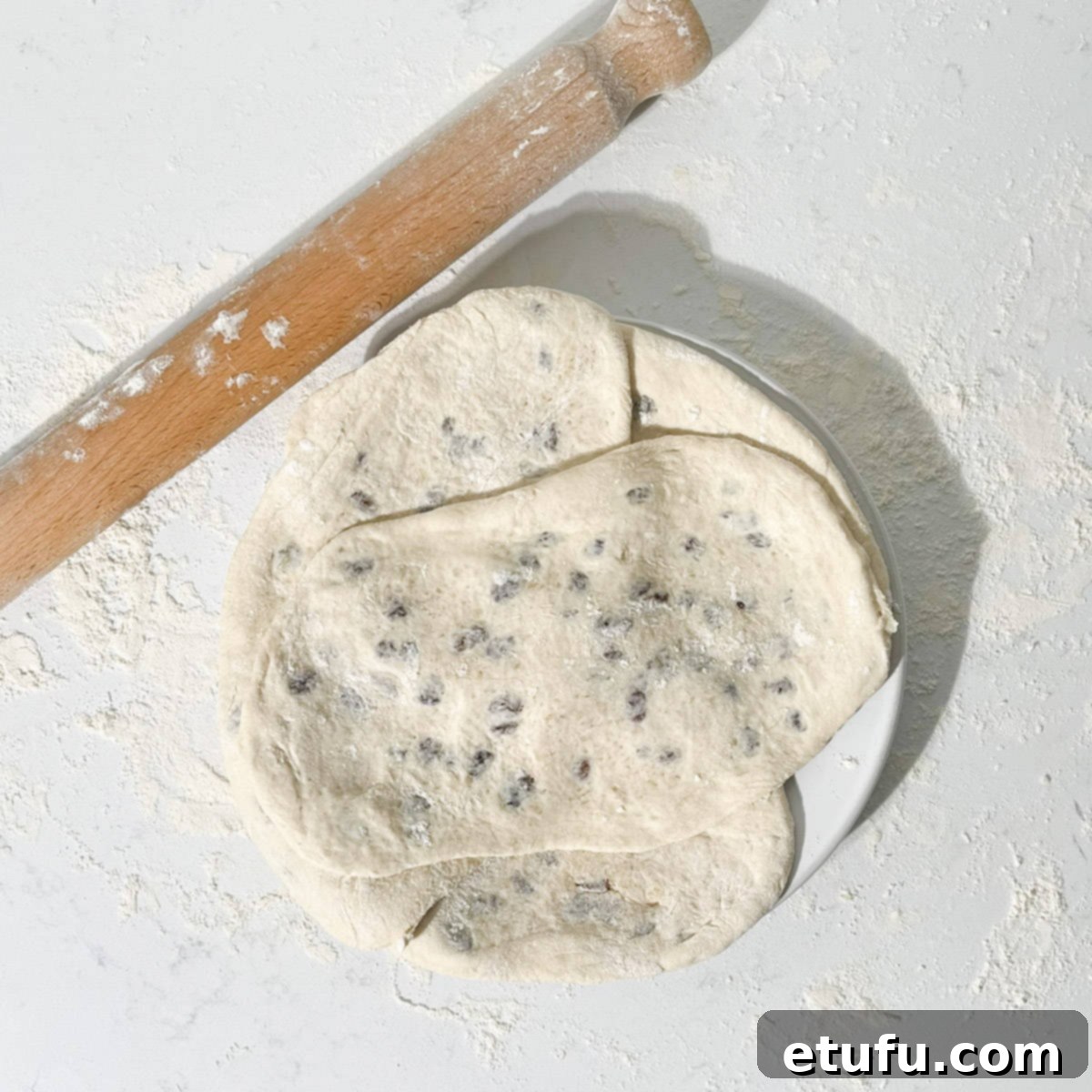
- Once rolled, gently pick up each naan and lightly toss it back and forth between your hands a few times. This action helps to remove any excess flour from the surface. Place the prepared naans aside on a clean plate, ensuring they don’t stick together.
Part 4: Cooking Your Naans

- Place a large frying pan (remember, at least 28cm diameter for large naans) over high heat and allow it to heat up fully until it’s searing hot. Once adequately heated, reduce the heat to medium-high. Carefully place the first naan into the dry pan. It’s crucial to “dry fry” the naan initially, meaning no oil or butter is added to the pan at this stage.
- Cook the naan for about 1-2 minutes until you see beautiful bubbles starting to form and puff up on its surface. This is a sign of proper cooking and indicates the naan is becoming wonderfully airy. Flip the naan over and briefly fry the other side for another 1-2 minutes, or until it develops a lovely golden colour with a few enticing brown spots. Keep an eye on the heat; if the naan is browning too quickly, slightly lower the heat to prevent burning and ensure even cooking.
- As each naan finishes cooking, transfer it to a clean plate. Cover the cooked naans loosely with aluminum foil or a clean tea towel to keep them warm and soft while you cook the remaining ones.
Part 5: Preparing and Applying the Glaze
- In a small bowl, combine all the ingredients specified for the glaze: melted butter, honey, sultanas, and flaked almonds. Stir thoroughly until all components are well integrated.

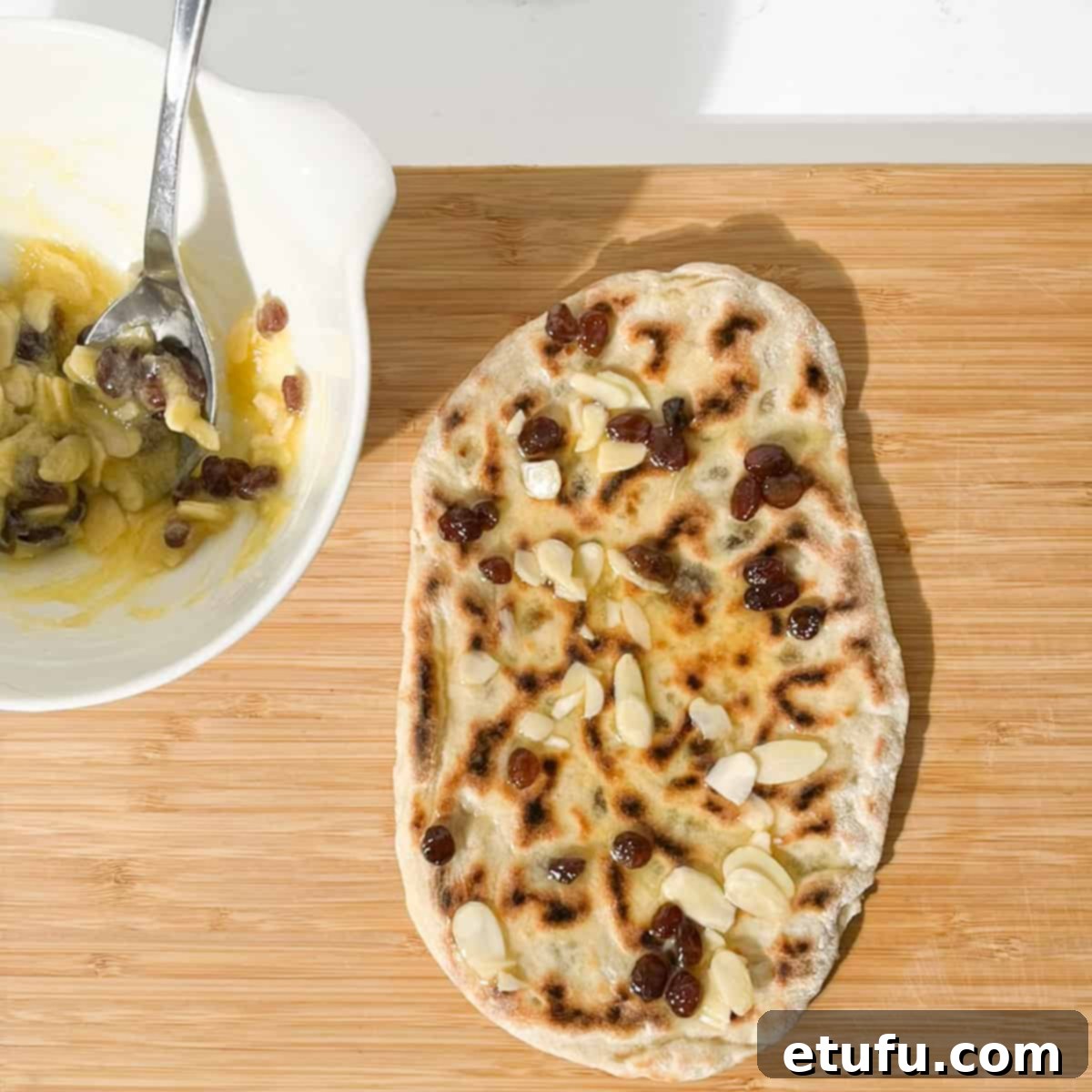
- Immediately after taking each naan off the pan, while it’s still hot, add a generous spoonful of the prepared glaze onto its surface. Using the back of the spoon, gently spread the glaze evenly from one end of the naan to the other, ensuring a beautiful, glossy, and flavourful coating.
- For an extra touch of freshness and vibrant colour, scatter some freshly chopped coriander over the glazed naan (this step is optional but highly recommended). Serve your magnificent homemade Peshwari Naan warm and enjoy!
Storing Your Homemade Peshwari Naan
To maximize convenience and enjoy your delicious naan for longer, follow these storage and reheating tips:
- Dough in the Fridge: The prepared naan dough can be made up to 24 hours in advance. Store it in a lightly oiled, airtight container in the refrigerator. This allows for convenient meal planning and develops even more flavour.
- Freezing Dough: For longer storage, the dough freezes exceptionally well for up to 3 months. To use, remove it from the freezer the day before you plan to cook, and let it defrost slowly in the refrigerator overnight. Bring to room temperature before shaping and cooking.
- Cooked Naans in the Fridge: Leftover cooked Peshwari naans will stay fresh in an airtight container in the refrigerator for up to 3 days.
- Reheating Cooked Naans: To bring your cooked naans back to life, simply brush or splash a small amount of water on both sides. Place them on a baking tray and warm them in a preheated oven at 180°C (356°F) / Gas Mark 4 for approximately 4-5 minutes, or until they are piping hot and soft again. You can also quickly reheat them in a dry hot pan for about 30 seconds per side.
Creative Serving Suggestions for Peshwari Naan
Peshwari Naan is incredibly versatile, shining brightly whether as a main accompaniment or a delightful appetizer. Here are some ideas to enhance your serving experience:
- Customize the Glaze: While the recipe includes a wonderfully sweet glaze, you can easily adjust the sweetness. For a less sweet option, simply brush the hot, cooked Peshwari naan with plain melted butter instead of the honey-nut glaze.
- Fresh Herb Finish: A sprinkle of freshly chopped coriander (cilantro) over the warm, glazed naan adds a burst of fresh flavour and a beautiful pop of colour. It complements the sweetness beautifully.
- Extra Nutty Texture: Elevate the nutty profile by scattering additional flaked almonds or even some chopped pistachios over the naan after glazing.
- Coconut Lover’s Dream: For an extra touch of tropical sweetness and texture, a light sprinkle of finely shredded or small coconut flakes can be added on top.
- The Ultimate Curry Companion: Peshwari Naan is a match made in heaven for a wide array of rich and spicy curries. Serve it alongside classics like Butter Chicken, the creamy and mild Oven-baked Pasanda Curry, the robust flavours of Nepalese Chicken Curry, a comforting Coconut Beef Curry, or the fiery Chicken Karahi. Its sweetness provides a perfect counterpoint to the spice.
- Stand-Alone Appetizer: Due to its rich filling, Peshwari Naan is substantial enough to be served as a delicious appetizer on its own, perhaps with a cooling raita or a simple chutney for dipping.
More Delicious Side Dishes for Your Curries
Complement your curries with these fantastic rice dishes that pair perfectly with naan or as a standalone side:
Fragrant Coconut Basmati Rice
Easy Yellow Basmati Rice
Explore More Dishes to Complement Your Naan
- Coconut Basmati Rice
- Yellow Rice for Bobotie (Geelrys)
- Quick Chicken Karahi
- Beef Curry with Coconut Milk
Homemade Peshwari Naan Recipe

Homemade Peshwari Naan
Elevate your naan game with this luxurious, sweet flatbread. Easy to make and incredibly delicious, it’s perfect alongside your favourite curry or as a standout appetizer. This is homemade naan at its finest!
4.99 from 69 votes
Print Recipe
Equipment
- stand mixer with dough hook attachment
- Rolling Pin
- large frying pan (at least 28cm diameter)
Ingredients
For the Dough
- 120 millilitre lukewarm tap water – circa 40℃/105℉
- 1 teaspoon sugar
- 1.5 teaspoon dry instant yeast
- 330 grams all-purpose flour – plus extra for rolling
- ½ teaspoon salt
- 1 tablespoon oil
- 7 tablespoons plain yoghurt (level spoons, not heaped) – 105ml
For the Peshwari Filling
- 90 grams flaked almonds – roughly 12 level tablespoons
- 60 grams sultanas – roughly 5 level tablespoons
- 2 tablespoons desiccated coconut
- 1 tablespoon honey
- 1 tablespoon plain yoghurt – or cream
- 30 millilitre melted butter – or 2 tablespoons
For the Glaze
- 100 millilitre melted butter – or 7 tablespoons
- 3 tablespoons honey
- 2 tablespoons sultanas
- 2 tablespoons flaked almonds
- fresh coriander for scattering over – optional
Instructions
Prepare the dough
- To a small bowl, add the lukewarm water, sugar and instant yeast. Give it a quick stir.
Note: The water should roughly be around 36C (97F) to 40C (104F) to activate the yeast. Too hot water will kill the yeast, too cold and it won’t activate. - Allow the yeast to develop for 10-15 minutes until a froth has developed on the surface.
- Add the all-purpose flour and the salt to the bowl of a stand mixer and stir to combine.
- Add the oil, yoghurt and the yeast mixture to the dry ingredients. Give it a stir to lightly combine the wet with the dry ingredients.
- Fit your stand mixer with its dough hook attachment. Switch the machine to a low setting and knead for 10-12 minutes until you have a soft, stretchy and smooth dough.
- Tip the dough into a lightly oiled bowl, cover with plastic wrap or a tea towel and leave it in a warm area for one hour.
Tip: If your kitchen is chilly or lacks a warm spot, warm up your oven for a couple of minutes, turn it off and place the bowl inside. Ensure the interior is not too hot, just comfortably warm. - After one hour the dough should have risen to roughly double in size.
- Tip the dough out onto a generously floured surface and divide it into four equal pieces.
(This is a very soft, sticky dough, so you’ll need extra flour to shape it.) - Sprinkle some extra flour on top of each piece of dough and then shape them into balls. Press each dough ball down into a flat circle. Turn them over to ensure they are not sticking to the surface. Leave the circles as they are while you make the paste.
Make the sweet, nutty filling (Peshwari paste)
- Add all the ingredients for the filling into the bowl of a food processor.
- Blend together until you have a coarse, pliable paste.
Assemble the naans
- Divide the filling into four and place a ball of filling in the middle of each dough round.
- Bring the edges of the circle up and around the filling, like a parcel. Gather the edges together at the top and pinch together to seal the filling in.
- Turn each ball upside down so the sealed end is now on the bottom.
- Using a rolling pin, roll the ball into a rough teardrop shape, or an oval shape. You want a thickness of about 5mm (⅕”). Turn the naan over halfway through rolling to ensure both sides are floured and not sticking to the surface. Repeat this process for each ball of dough.
- Throw each naan back and forth between your hands to get rid of any excess flour and set it aside on a clean plate.
- Place a large frying pan over high heat and let it heat fully. Once the pan is searing hot, reduce the heat to medium-high and add the first naan to the dry pan (dry fry, no oil or butter).
- Fry the naan until bubbles start to form on the surface. Flip the naan over and briefly fry the other side until golden with some brown spots. Regulate the heat accordingly, if it’s browning too fast, turn the heat down a smidge.
- Keep the cooked naans on a plate, covered with some foil or a clean tea towel.
Make the glaze
- Stir together all the ingredients for the glaze in a small bowl.
- Add a spoonful of the glaze onto each hot naan and spread it out with the back of a spoon to cover the naan from end to end.
- Scatter over chopped coriander (optional) and serve warm.
Notes
Kneading the dough
This naan dough is quite soft and sticky, so it’s much easier to use a stand mixer for kneading. If you prefer kneading by hand, keep some extra flour nearby to prevent sticking to your hands or the surface.
Portion sizes
We prefer large naans, similar to the ones found in British Indian restaurants. This recipe yields four substantial naans and you will need a frying pan of at least 28cm in diameter to cook them. If you prefer smaller naans, just divide the dough into smaller portions and split the filling and glaze accordingly between them.
Level of sweetness
Peshwari naan is on the sweeter side. Both the filling and the glaze contain sweet ingredients. If you prefer it less sweet, just skip the glaze and brush each naan with plain melted butter.
**Nutritional data disclaimer**
Please keep in mind that the nutritional information provided below is calculated by a third party and we cannot guarantee its accuracy. We try our best to give you the most accurate information, but we do not take responsibility for errors that may be present. Also, the nutritional value of the recipe may change depending on the exact brands and products used. We recommend that you consult with a qualified healthcare professional or registered dietitian for personalised advice on your dietary needs.
Nutrition
For important food safety advice, including guidance on food allergies, always consult official food safety guidelines.
More Irresistible Curry Recipes
Expand your culinary horizons with these delectable curry recipes that are perfect alongside your homemade naan or rice:
Classic Chicken Dopiaza
Hearty Chicken Handi Curry
Exotic Nepalese Chicken Curry
Simple Oven-baked Chicken Pasanda Curry
Rich Aromatic Beef Curry with Coconut Milk
Flavourful Curried Mince (Ideal for Vetkoek)
Refreshing Curry Noodle Salad
Speedy Chicken Karahi
